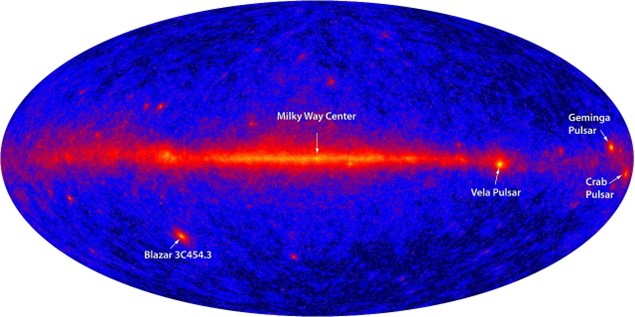
Fun facts
The Vela supernova remnant is a supernova remnant in the southern constellation Vela. Its source Type II supernova exploded approximately 11,000 years ago (and was about 900 light-years away). The association of the Vela supernova remnant with the Vela pulsar, made by astronomers at the University of Sydney in 1968, was direct observational evidence that supernovae form neutron stars.
The Vela supernova remnant is one of the closest known to us. The Geminga pulsar is closer (and also resulted from a supernova), and in 1998 another near-Earth supernova remnant was discovered, RX J0852.0-4622, which from our point of view appears to be contained in the southeastern part of the Vela remnant. This remnant was not seen earlier because when viewed in most wavelengths, it is lost in the Vela remnant.

Distance: ~936 light years
Apparent Magnitude: 12
Apparent Dimensions: 8 degrees (approximately
Constellation: Vela
Designations: Vela XYZ, Gum 16, SNR G263.9-03.3, 1E 0840.0-4430, RE J083854-430902
{ From: https://en.wikipedia.org/wiki/Vela_Supernova_Remnant }
The book, Imaging the Southern Sky by Stephen Chadwick & Ian Cooper (an EXCELLENT reference that I used to plan all my targets for this trip) describes the Vela Supernova Remnant on pp 34-54, including an overall image and reference chart shown below.


- Gum20
- Crest and the Bridge
- Twin Crescents and the Bypass
- Highway and the Spur
- Pencil Nebula
- Spiral Flame Nebula
The reference chart describes portions of the Vela SNR. After processing my capture that I planned as a capture of #2. Crest and the Bridge, it looks as if it is really more of a combination of #2, 3, and 4 and some of the gap area in-between those “named” targets. I already have started building my list of desired targets for a 2025 Atacama Lodge trip. As Stephen Chadwick and Ian Cooper, the Imaging the Southern Sky authors describe, I will be spending some imaging time on this “astroimager’s paradise!”
Capture & Processing Notes
On night #6, the final imaging night of the Atacama Desert trip, I ran out of targets! I never would have imagined or dared to hope for 6 completely clear nights in a row! So, I went into the Imaging the Southern Sky book and found another segment of the Vela SNR – in the vicinity of the Spiral Flame Nebula and built a sequence to image it to start the night. I’d planned to image Vela SNR until it set at about 0400, then switch to Gum 22-23 for the rest of the night. While the Vela SNR was beginning (PHD2 calibration), it dawned on me that I had intended to image the IC4592 Blue Horsehead Nebula, since it is always so low on the horizon from the Northern Hemisphere. While the PHD calibration was on-going, I pulled up Stellarium to see what the visibility was from the Atacama Lodge. I was delighted to find that it rose at about 0130 crossed the meridian at 0630 (just about the time I’ve been terminating my sequences at the end of astronomical twilight) and was very high in the sky! So, that became my night’s second target.
All the imaging went extremely well, with no glitches whatsoever. Like Danita mentioned – “you’ve had 6 days in a row of practice, rather than sporadic imaging sessions with time in-between to forget what you learned from one to the next.”
Sequence Plan:
- Sequence plan: Gain 158, Temp: 0°C, 53x5minute subframes. Total time = 265minutes, 4:25 hours
- Captured: Night of 11 March 2024 (11Mar2024, 2105CDT – 12Mar2024, 0151CDT)
- Shooting location: Atacama Lodge, San Pedro de Atacama, Chile
Processing summary: Captured with SGP. Stacked in APP. Star removal with Starnet++. Processed in LR/PS
Equipment
All equipment controlled by HP Probook (DSO CTRL 1) Windows 10 laptop running Sequence Generator Pro v4.3.0.1305.
- Polar alignment: QHYCCD camera (controlled by Polemaster for polar alignment)
- Imaging: (Southern Cross) Askar FRA600 on Rainbow Astro RC-135E, ZWO ASI2400MC#1 camera
- Autofocuser: ZWO EAF ( Electronic Automatic Focuser)
- Mount: Rainbow Astro RST-135E (controlled by iHubo ASCOM driver)
- Autoguiding: Orion 60mm Multi-Use Guide Scope with Orion StarShoot AutoGuider Pro Mono Astrophotography Camera (controlled by PHD2)
